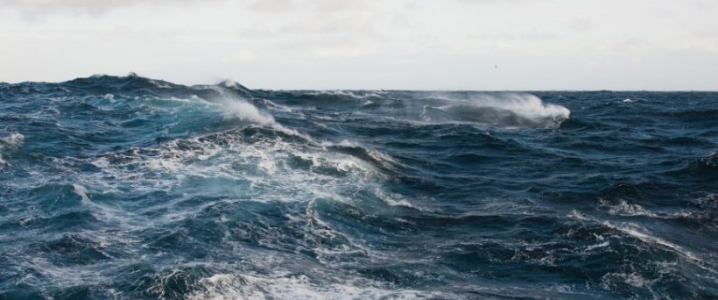For decades, the North Sea has been delivering much of the oil and gas to the world’s global supply of fossil fuels.
As technologies advanced and climate change concerns increased, the North Sea also became a leader in offshore wind capacity installation and innovation.
For the countries on the North Sea, and for all renewable projects around the world for that matter, the key challenge in boosting the share of renewables in the power mix is a way to find a reliable cost-efficient way to store the energy produced so it can be released when needed.
A new study by a team of scientists from the University of Edinburgh suggests that porous rocks on the North Sea bed could act as energy storage facilities.
Julien Mouli-Castillo of the University of Edinburgh’s School of GeoSciences and his team suggest in an article in Nature Energy that the so-called compressed-air energy storage (CAES) technology could be applied in those porous rocks to store energy for a few months, for example to have it readily available during peak electricity winter demand in the UK.
CAES could use electricity from renewables to power a motor that generates compressed air. This compressed air would then be stored at high pressure in the porous rock, through a deep well drilled into the rock. When electricity demand is high, the compressed air would be released from the well and power a turbine to generate electricity to send to the power grid. Related: New Tech Converts CO2 Into Electricity And Hydrogen
The scientists suggest that the CAES approach could be used in porous rocks where seismic exploration data for oil and gas is available, if those rocks are close to renewable energy sources. The UK meets those two criteria—the UK North Sea is well explored. The North Sea and the nearby Atlantic Ocean are also home to 90 percent of global installed offshore wind capacity, according to the International Renewable Energy Agency (IRENA).
Mouli-Castillo and team have designed a modeling approach to predict the potential of North Sea porous rocks to store energy.
The potential storage capacity is equal to some 160 percent of the UK’s electricity consumption in January and February 2017—between 77 and 96 terawatt hours (TWh).
“In the example of the UK North Sea, the energy storage potential of up to 96 TWh is sufficiently large to make seasonal storage (two winter months) worthy of more detailed investigation,” the scientists wrote in the article.
They have estimated that the efficiency of such storage in the UK would be 54-59 percent.
The porous rocks are common worldwide and have more total storage potential than mined salt caverns, the researchers say. Onshore salt caverns in the UK, for example, are estimated to store a total of 8 TWh of energy.
Currently, there are two commercial power plants in the world using the CAES technology, where compressed air is stored in salt caverns. One is the McIntosh Power Plant in Alabama, and the other one is in Huntorf, Germany.
Areas in the Southern North Sea, East Irish Sea, and Inner Moray Firth have the porous rocks needed to store energy, and those areas are close to wind farms, potentially creating synergies between generation and storage, the scientists argue. Related: Are Energy Hedge Funds Going Extinct?
However, there is one major obstacle to this approach to energy storage—cost. The offshore CAES approach would cost in the range US$0.42-4.71 per kWh. This is much higher than other potential CAES storage solutions and higher than the current cost of batteries, which were included in the estimates for comparison, despite not being suited to bulk grid-connected inter-seasonal storage, the researchers say.
“This method could make it possible to store renewable energy produced in the summer for those chilly winter nights. It can provide a viable, though expensive, option to ensure the UK’s renewable electricity supply is resilient between seasons. More research could help to refine the process and bring costs down,” Mouli-Castillo said in a statement to the University of Edinburgh.
While the potential commercial application of this compressed air energy storage will need a lot more research and methods to bring costs down, renewable energy generation in the UK is growing month after month. According to the latest available data from the Department for Business, Energy and Industrial Strategy, the share of renewables of electricity generation rose to a record 33.1 percent in Q3 2018, up from 30.0 percent in Q3 2017. Renewable electricity capacity at end-Q3 2018 stood at 43.2 GW, up by 10 percent from Q3 2017. Meanwhile, the shares of both coal and natural gas in electricity generation in Q3 dropped from a year earlier to account for 2.5 percent and 38.6 percent, respectively.
By Tsvetana Paraskova for Oilprice.com
More Top Reads From Oilprice.com:
- Private Investment In Natural Resources Hits Record High
- Energy Transition Will Upend Geopolitics
- Oil Flat As U.S. Drilling Slows Down


















